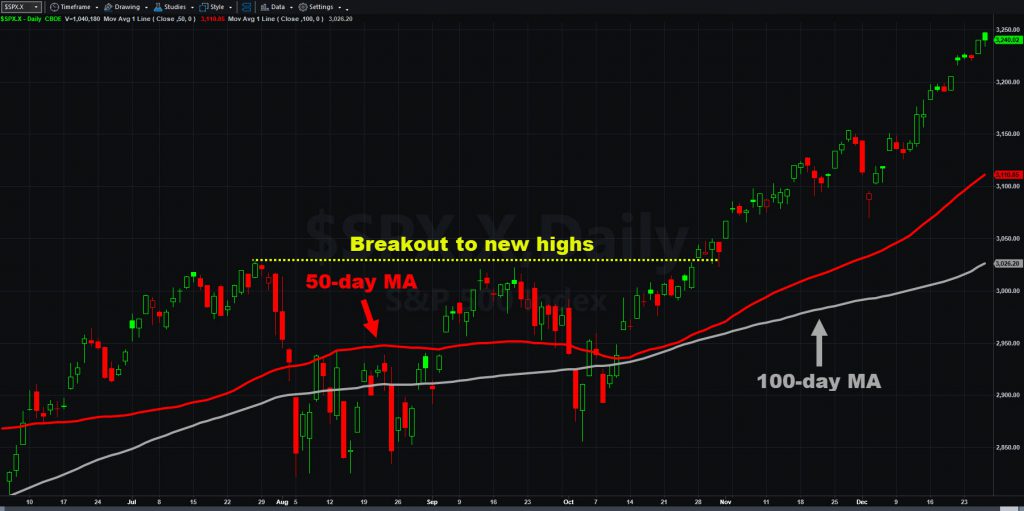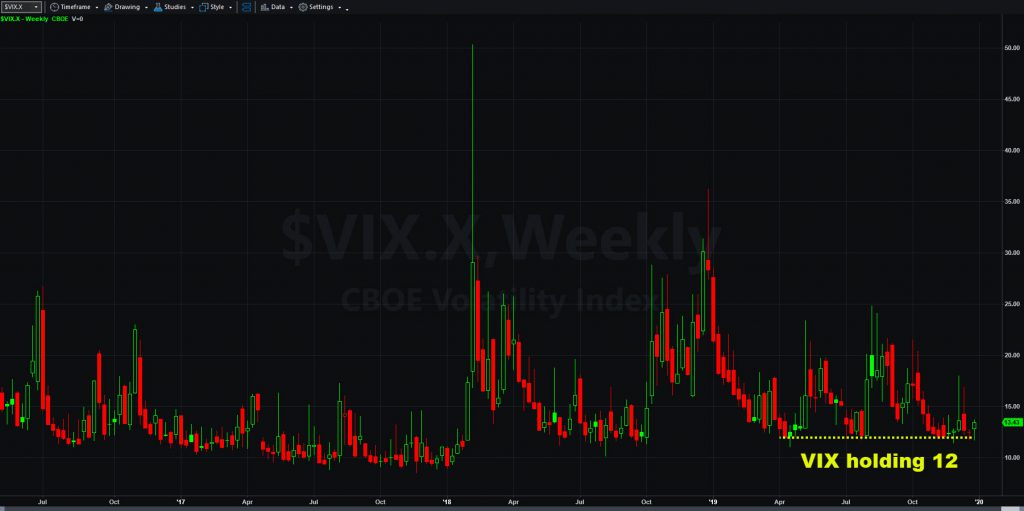Stocks are trying to end the year in rally mode as fears of a recession morph into fear of missing out.
The S&P 500 rose 0.6 percent in the Christmas-shortened period between Friday, December 20, and Friday, December 27. It was the fifth straight positive week and the 11th weekly gain in the last 12.
Consumer stocks led the rally after e-commerce giant Amazon.com (AMZN) reported a quadrupling of free one- and same-day Prime orders. Holiday shoppers might have procrastinated, but they still spent record amounts. Data from Mastercard (MA) was similarly strong.
There was potentially good news for global markets as the White House and Beijing moved closer to a “phase one” deal to avoid further tariffs. The U.S. House of Representatives also approved a big trade deal with Mexico and Canada (“USMCA”).
A weaker U.S. dollar lifted precious metals. Energy continued to gain as well amid hopes of a stronger global economy and OPEC production cuts. The sector has finally turned positive for the year but is still the worst performer by a long shot.

FOMO Taking Hold?
Remember, investors were trapped in cash less than three months ago. Surveys showed extreme fear of trade wars and recession. Then the S&P 500 broke out to new highs as sentiment swung in favor of the bulls. That suggests “fear of missing out,” or “FOMO,” is now stronger than worries about a crash.
Some other charts seem consistent with that narrative. Safe havens like the Japanese Yen (@JY), U.S. dollar (@DX) and utilities all struggled last week. While that might sound positive, excessive optimism can be a contrary indicator.
Traders might want to keep two other things in mind. First, Cboe’s Volatility Index ($VIX.X) has ground down to 12 but refuses to go lower. A rebound from that level could weigh on the broader market.
Second, investors are sitting on hefty unrealized capital gains with the S&P 500 up 29 percent this year. Some strategists warn they may sell high-fliers in January for tax purposes.
However, the major drivers — strong employment and low interest rates — remain favorable for stocks in general.

A Big Week for Jeff Bezos
Apache (APA) had the biggest gain in the S&P 500 last week. The energy driller surged 15 percent on news French energy giant Total (TOT) would help develop an oil field off the coast of Suriname. Worries about the same deposit hammered APA earlier this month.
AMZN followed, spiking on almost 5 percent on those late Christmas orders. It was the biggest weekly gain for Jeff Bezos’ company since April.
Drug maker Perrigo (PRGO) and auto dealer CarMax (KMX) had the sharpest drops in the S&P 500. Both slid about 5 percent.
Two other major stocks outside index also rose. Tesla (TSLA), run by Elon Musk, climbed to new record highs on news of expanding into China. Alibaba (BABA) broke above its mid-2018 peak as investors flooded back to emerging markets.
This week is also cut in half by a holiday. Volumes will probably be very light, although there are still a handful of economic reports.
Today brings pending home sales. Consumer confidence and the Case-Shiller home-price index follow tomorrow.
Markets are closed Wednesday for New Year’s Day.
Thursday features initial jobless claims and minutes from the last Federal Reserve meeting.
The week ends with the Institute for Supply Management’s manufacturing index on Friday morning. Construction spending and crude-oil inventories are also due.


























